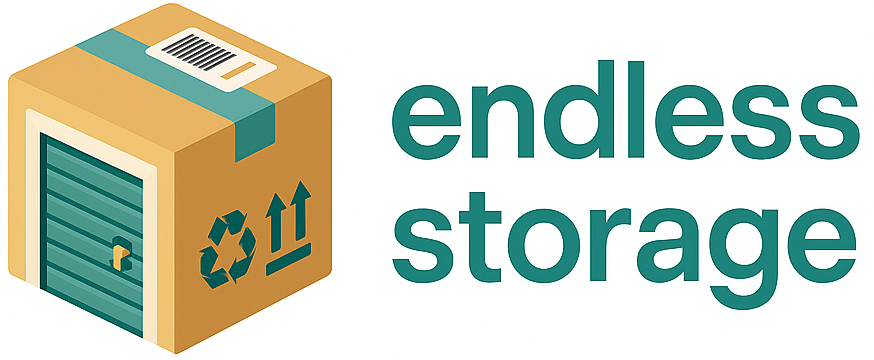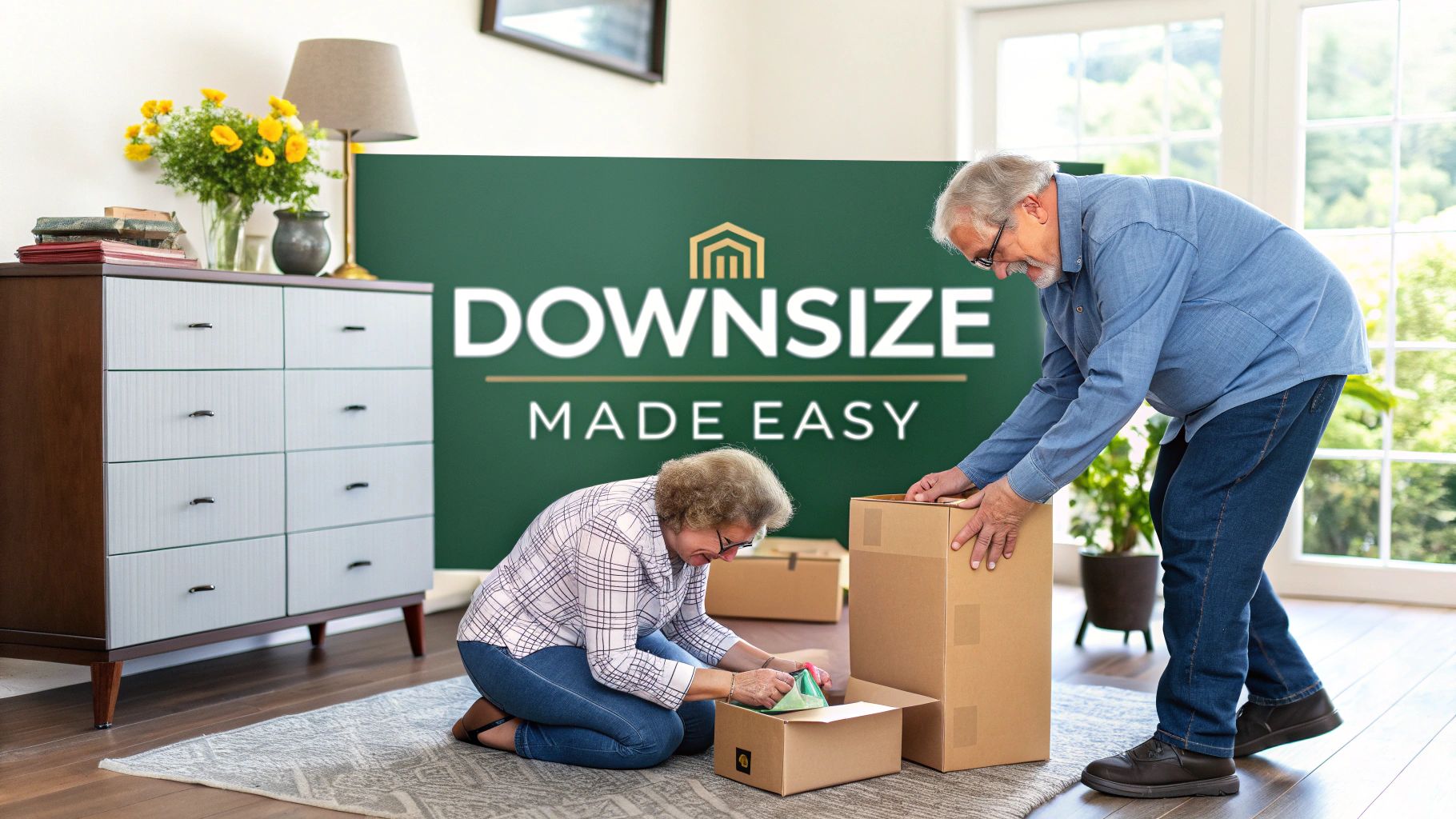Downsizing is more than just moving to a smaller home; it's a profound transition into a simpler, more manageable lifestyle. For many seniors, this journey represents a new chapter filled with freedom, but the path to get there can feel overwhelming. The process involves sorting through a lifetime of memories, making difficult decisions, and navigating complex logistics. This comprehensive guide offers actionable downsizing tips for seniors, designed to break down the process into manageable, stress-free steps.
We will explore practical strategies covering every stage of the move, from developing a detailed floor plan to handling the emotional weight of parting with sentimental items. This article provides a clear roadmap, whether you're planning for yourself or assisting a loved one. You will learn how to organize, sort, and declutter efficiently using proven methods. We'll also cover how to engage professional help and utilize modern solutions like specialized storage services to simplify the logistics.
By following these targeted tips, you can approach this significant life change with confidence and clarity. Our goal is to empower you to make the transition as smooth and rewarding as the new lifestyle that awaits, ensuring you can focus on the benefits of simplified living.
1. Develop a Detailed Downsizing Plan
Attempting to downsize without a clear roadmap can quickly become overwhelming. A detailed downsizing plan is your essential first step, providing structure and direction to an otherwise emotional and complex process. This foundational strategy involves setting clear timelines, establishing a realistic budget, and defining your goals to transform the entire project into a series of manageable tasks. By planning ahead, you can avoid last-minute stress and make more thoughtful decisions about what to keep, donate, sell, or store.
This approach is one of the most effective downsizing tips for seniors because it establishes control and predictability. For instance, you could create a six-month schedule, dedicating specific weeks to sorting through individual rooms, like the guest bedroom in month one and the garage in month two. This prevents burnout and ensures steady progress.
Creating Your Downsizing Framework
A successful plan hinges on three core components: time, money, and inventory. Breaking these down makes the entire endeavor feel less like a monumental chore and more like a well-organized project.
- Establish a Timeline: Set a firm move-out or downsizing completion date and work backward. Create mini-deadlines for each room or category (e.g., sort all books by June 1st, clear out the kitchen by June 15th).
- Set a Budget: Account for all potential costs, including moving services, packing supplies, storage unit fees, and potential repairs or cleaning services for your current home. Always add a 10-15% contingency for unexpected expenses.
- Build an Inventory: Go room by room and create a checklist of major items. Decide the fate of each one: keep, sell, donate, discard, or place in storage. Using a simple spreadsheet or a dedicated app can help you track your progress.
The following visual guide outlines this strategic planning process, showing how to sequence your key actions for a smooth transition.
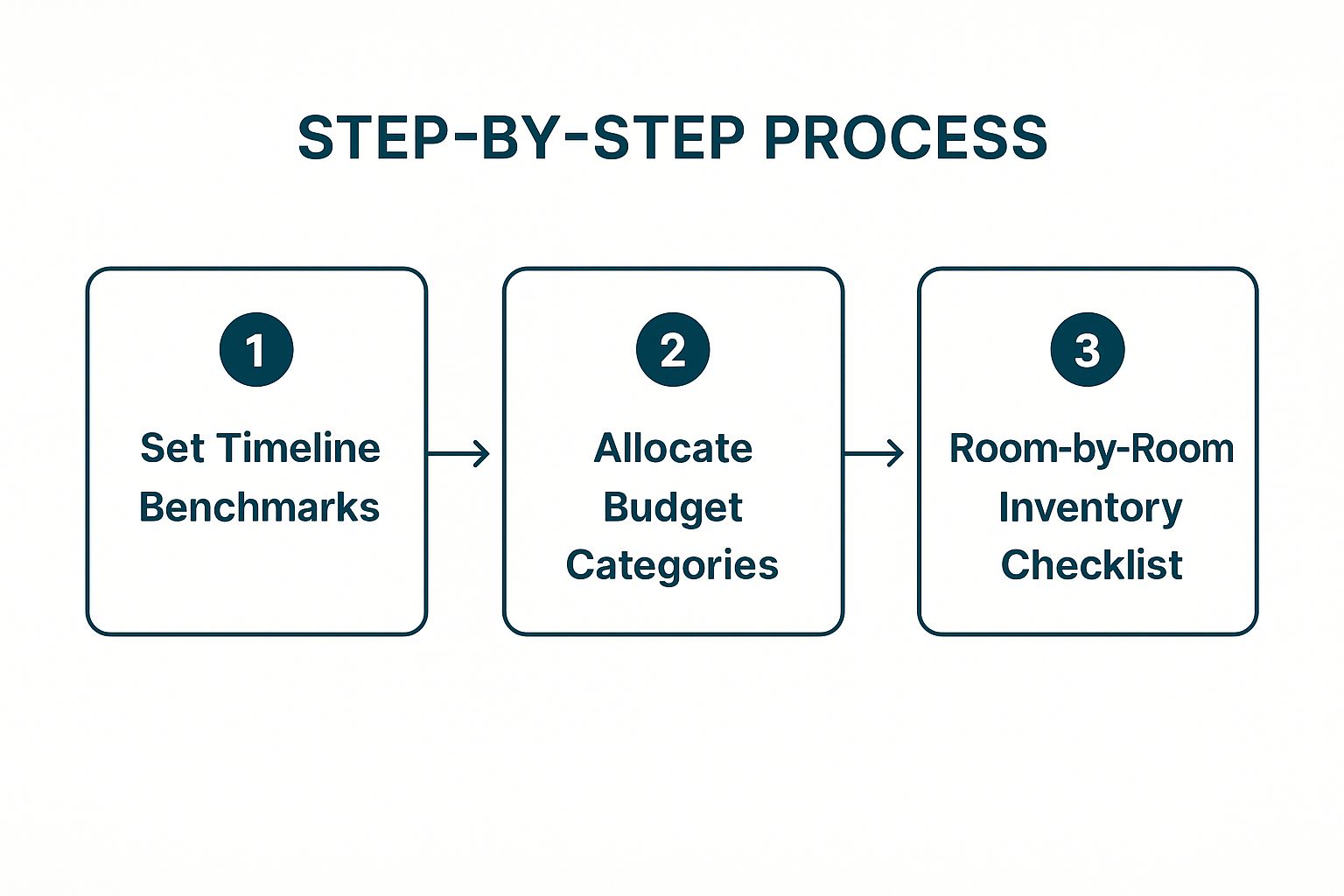
This step-by-step flow ensures that you build a logical and comprehensive strategy before the physical work begins. For more in-depth guidance on creating your own roadmap, you can learn more about how to downsize before moving.
2. Use the Four-Box Method (Keep, Donate, Sell, Recycle/Trash)
Tackling a room full of possessions can feel paralyzing, but the Four-Box Method provides a simple, systematic way to make decisions. This strategy forces you to assign a clear purpose to every single item, eliminating indecision and keeping the process moving forward. By physically sorting items into one of four categories (Keep, Donate, Sell, or Recycle/Trash), you transform clutter into organized, actionable piles, making the entire project less emotional and more mechanical.
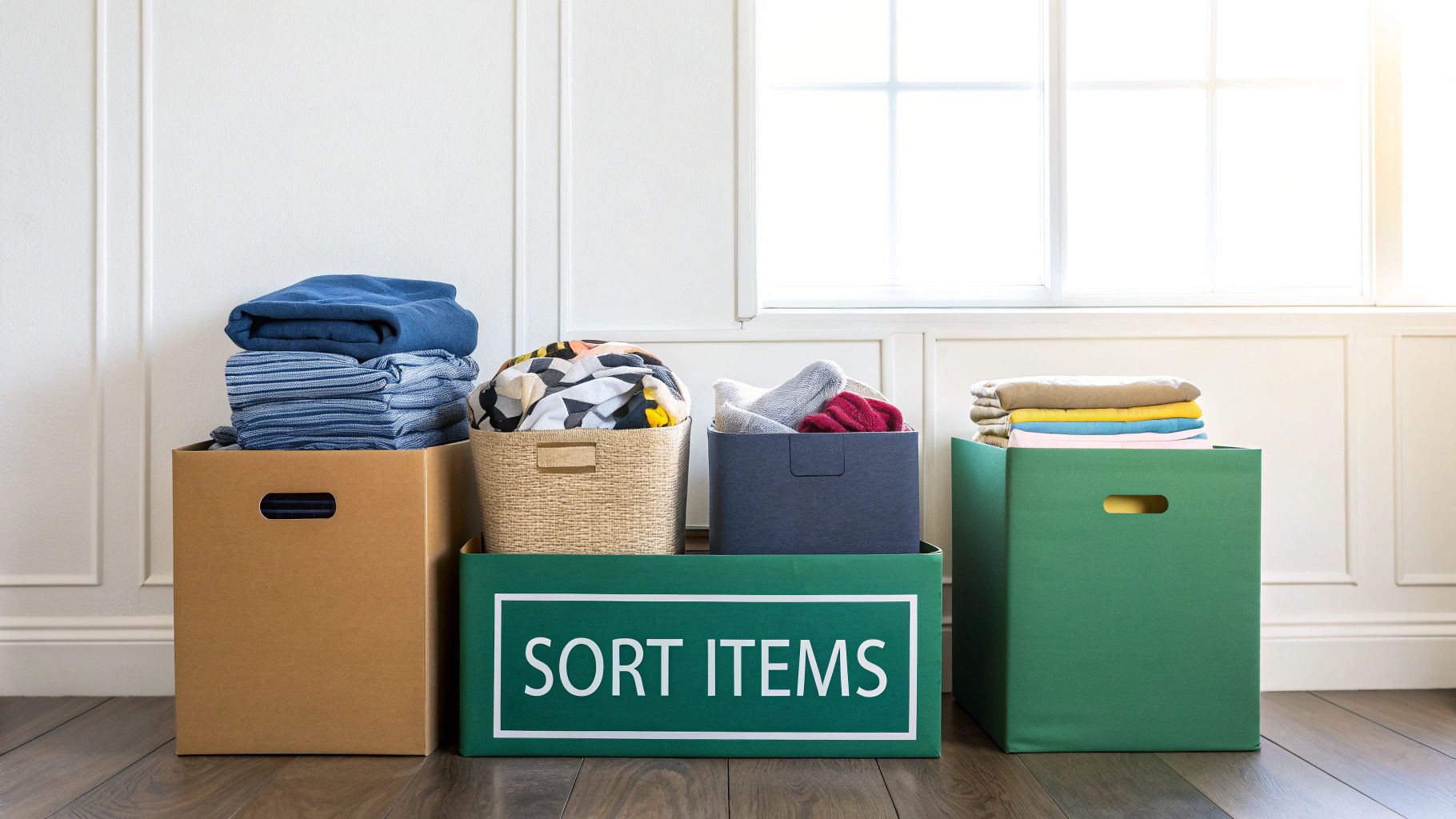
This tactic is one of the most effective downsizing tips for seniors because it simplifies choices into concrete actions. For example, instead of wondering what to do with an old armchair, you immediately decide if it’s essential for your new space (Keep), a valuable piece for consignment (Sell), or a useful item for a charity like Habitat for Humanity ReStore (Donate). This decisive approach prevents items from being endlessly shuffled from one corner to another.
Implementing Your Sorting System
A successful sort depends on having a clear system and sticking to it. Setting up your boxes before you begin is crucial for maintaining momentum and focus.
- Label Everything Clearly: Use large, clearly labeled boxes or designated corners in each room. This visual organization prevents confusion and keeps you on task.
- Schedule Regular Removals: Don’t let sorted boxes pile up. Schedule a weekly drop-off for donated items or arrange for a charity to pick them up. This creates a tangible sense of progress.
- Preserve the Memory, Not the Item: For sentimental items you can't keep, take a high-quality photo. Creating a digital scrapbook allows you to hold onto cherished memories without sacrificing physical space.
The following video demonstrates how to apply this method to declutter efficiently, providing visual guidance for your own downsizing journey.
By committing to this framework, you can systematically work through your home with confidence and clarity. For a deeper dive into organizing your belongings, explore more decluttering tips for seniors to simplify your space.
3. Digitize and Organize Important Documents and Memories
Paperwork, photo albums, and sentimental documents often take up entire filing cabinets and boxes, creating significant physical clutter. Digitizing these items is a powerful way to preserve precious memories and critical information while freeing up valuable space in your new home. This process involves scanning documents and photos to create secure digital copies that are easy to organize, access, and share. By moving these collections from paper to pixels, you protect them from physical damage and simplify your life.
This strategy is one of the most impactful downsizing tips for seniors because it addresses both emotional and practical clutter simultaneously. For example, an individual could spend a few weekends scanning decades of family photos, transforming bulky albums into a single, organized digital folder. This not only clears shelves but also makes it effortless to share these memories with family members, regardless of where they live.
Creating Your Digital Archive
A successful digitization project focuses on prioritizing what to scan and establishing a clear organizational system from the start. This ensures your digital files are just as accessible as their physical counterparts, if not more so.
- Prioritize Critical Documents: Begin with the most important paperwork: wills, deeds, medical records, tax documents, and birth certificates. These are essential for legal and financial management.
- Establish a Naming System: Create a consistent naming and folder structure before you start scanning. For instance, a folder named "Family Photos" could contain subfolders like "1980s," "1990s," and so on, with individual files named "1985_Christmas_at_Grandmas.jpg."
- Use the Right Tools: A high-speed scanner can make quick work of documents, while services like LegacyBox or ScanMyPhotos are excellent for converting large collections of photos, slides, and home videos.
Organizing these digital files correctly is just as important as creating them. For more details on safeguarding both your physical and digital records, you can learn more about how to store important documents.
4. Host Targeted Estate Sales or Online Sales
Once you have sorted your belongings, selling valuable or unneeded items can be a practical way to simplify your move and generate extra funds. Hosting a well-organized estate sale or leveraging online marketplaces like eBay and Facebook Marketplace transforms clutter into capital, which can help offset moving expenses or fund your new lifestyle. This proactive step ensures your possessions find a new home while providing you with tangible financial benefits.
This strategy is one of the most effective downsizing tips for seniors because it monetizes the decluttering process. For example, a professional estate sale company in Charleston helped a 75-year-old retiree generate over $8,000 in just two days by selling furniture, art, and collectibles. This approach turns a potentially daunting task into a rewarding financial opportunity, making the transition smoother and less stressful.
Maximizing Your Sales Potential
A successful sale, whether in-person or online, depends on smart preparation and strategic execution. By focusing on presentation, pricing, and timing, you can attract more buyers and achieve better results.
- Bundle Items Strategically: Group smaller, related items into themed lots to increase their appeal and value. For instance, combine vintage kitchenware, a set of gardening tools, or a collection of classic books into a single, attractively priced package.
- Price to Sell, But Be Flexible: Research comparable items online to set fair market prices. Price items generously but leave a small margin for negotiation, as many buyers expect to haggle, especially at in-person sales.
- Schedule for Success: Plan your sale at least four to six weeks before your moving date. This provides ample time for advertising, hosting the event, and dealing with any unsold items without adding last-minute pressure.
This methodical approach to selling ensures you get the most value from your possessions while clearing out your space efficiently. For more guidance on managing valuable items you are not ready to part with, you can learn more about secure storage for valuable collections.
5. Engage Specialized Senior Move Managers and Organizers
The downsizing journey involves more than just physical sorting; it carries significant emotional and logistical weight. Engaging professionals specifically trained to handle these complexities can be a game-changer. Senior move managers are specialists who assist older adults and their families with the entire process, from planning and decluttering to packing, moving, and settling into a new home. They provide a compassionate, hands-on approach that alleviates stress for everyone involved.
This is one of the most powerful downsizing tips for seniors because it provides expert support tailored to their unique needs. A certified senior move manager understands the emotional attachments to belongings and can facilitate difficult decisions with sensitivity and patience. For instance, a NASMM-accredited professional can create a custom floor plan for the new residence, helping you visualize what will fit and making the sorting process more practical and less painful.
Finding the Right Professional Support
Choosing the right partner is crucial for a smooth and positive experience. A qualified senior move manager does more than just move boxes; they manage the entire transition with expertise and empathy.
- Verify Credentials and Affiliations: Look for professionals certified by the National Association of Senior Move Managers (NASMM). This ensures they adhere to a strict code of ethics and have specialized training.
- Request Local References: Ask for contact information from recent clients in your area. Hearing directly from others about their experience provides invaluable insight. Also, request to see before-and-after photos of past projects.
- Clarify All Services and Costs: Before signing a contract, get a detailed, written estimate that outlines all services included and the exact billing structure. This transparency prevents unexpected fees and ensures you know precisely what to expect.
By entrusting the process to a specialist, you can focus on the emotional and personal aspects of your move, confident that the logistical details are in expert hands. You can find a certified Senior Move Manager near you to get started.
6. Optimize Small Spaces with Multifunctional Furniture and Storage Solutions
Moving to a smaller home doesn't mean sacrificing comfort or function; it means getting smarter with your space. Multifunctional furniture and clever storage solutions are designed to maximize every square inch, allowing you to maintain your lifestyle without the clutter. This strategy involves choosing pieces that serve multiple purposes, such as an ottoman with hidden storage or a bed with built-in drawers, to keep your new home open and organized.
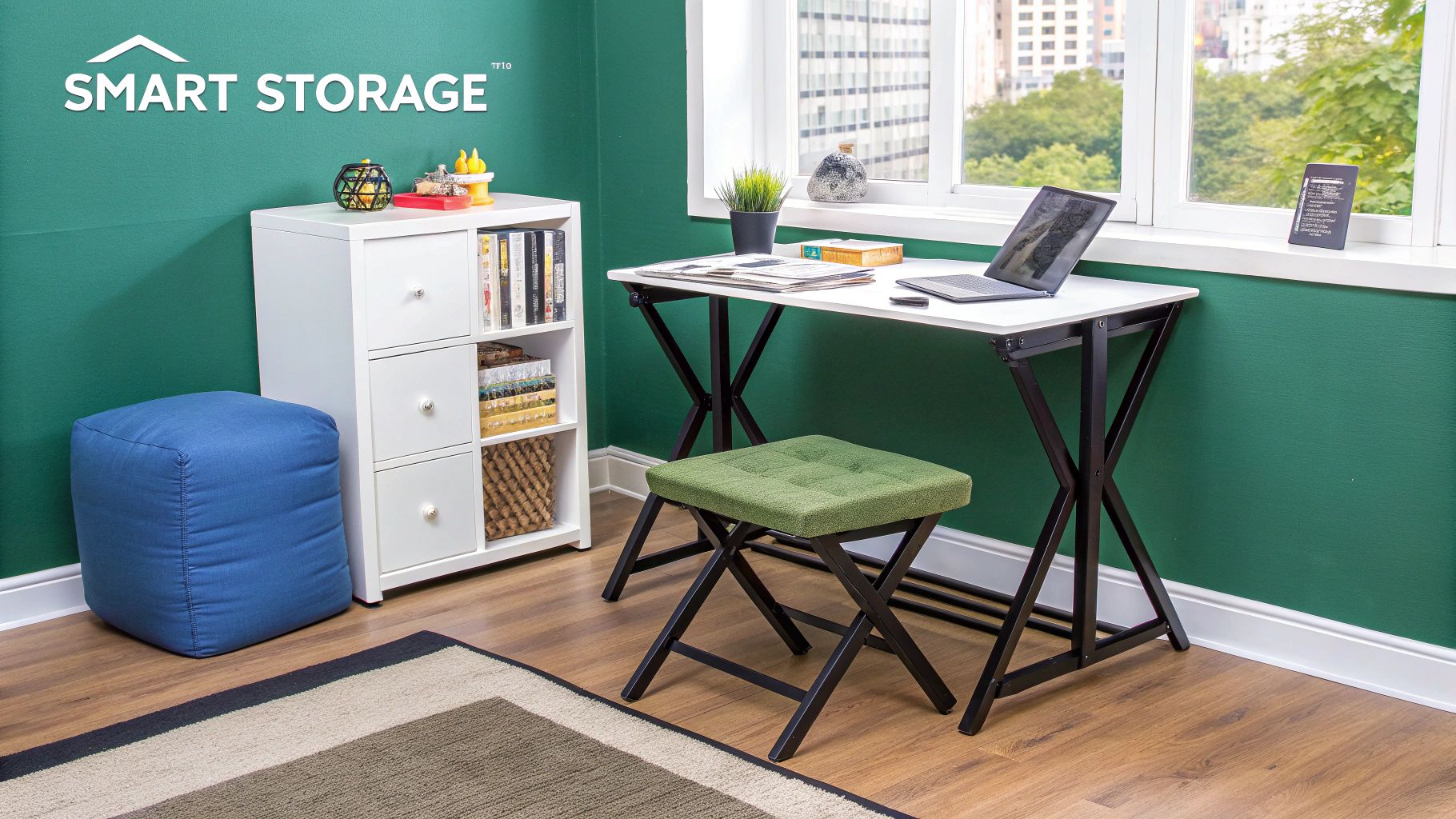
This approach is one of the most practical downsizing tips for seniors because it directly addresses the challenge of limited square footage. For example, a Murphy bed can transform a guest room into a home office or hobby space during the day. Similarly, nesting tables provide extra surface area when you have company but tuck away neatly when not in use, preventing your living area from feeling cramped.
Maximizing Your New Layout
Success with this strategy comes from intentional selection and precise planning. Focus on furniture that not only fits your new space but also enhances its usability and visual appeal.
- Measure Everything: Before buying anything, measure your new rooms precisely. Note the dimensions of walls, doorways, and windows to ensure new furniture will fit comfortably and not obstruct traffic flow.
- Prioritize Accessibility: Opt for solutions that are easy to use. Pull-out shelves in cabinets, drawers instead of deep cupboards, and lightweight, modular systems like IKEA's PLATSA make items reachable without straining.
- Choose Lighter Colors: Light-colored or transparent furniture (like acrylic tables) creates an illusion of openness. This makes small rooms feel larger and more airy.
The goal is to furnish your home in a way that is both beautiful and highly efficient, turning potential limitations into design opportunities. For additional ideas on making your space work for you, you can explore more about affordable storage solutions.
7. Lean on Family Support and Counseling for Emotional Well-Being
The process of downsizing is far more than a physical task; it is an emotional journey filled with nostalgia, grief, and sometimes anxiety. Acknowledging and addressing these feelings is crucial for a healthy transition. Leaning on family, friends, or even professional counselors provides an essential support system, transforming a potentially isolating experience into a shared, manageable one. This approach helps preserve mental well-being and strengthens relationships during a significant life change.
This strategy is one of the most vital downsizing tips for seniors because it prioritizes mental health alongside logistical planning. For example, involving children or grandchildren in sorting through old photo albums can turn a sad task into a cherished opportunity for storytelling and connection. Similarly, seeking guidance from a therapist can provide coping mechanisms for letting go of a home filled with decades of memories, ensuring you feel empowered rather than overwhelmed.
Building Your Emotional Support Network
A strong support system is built on open communication, clear expectations, and a willingness to seek outside help when needed. Focusing on these areas can prevent misunderstandings and reduce stress for everyone involved.
- Schedule Regular Family Meetings: Set aside specific times to discuss progress, challenges, and feelings. Use a clear agenda to keep conversations productive and ensure everyone’s voice is heard.
- Use a Neutral Facilitator: If family discussions become tense or difficult, consider bringing in a neutral third party like a therapist, mediator, or trusted family friend to guide the conversation and resolve conflicts.
- Celebrate Milestones: Acknowledge and celebrate small victories together, like finishing a room or successfully selling a large piece of furniture. A small family dinner or outing can boost morale and reinforce a sense of teamwork.
This focus on emotional well-being is not just about managing stress; it’s about creating a positive foundation for the next chapter of life. For more insights on how organization impacts your mindset, you can learn more about the connection between decluttering and mental health.
8. Understand Legal and Financial Implications Early
Downsizing involves more than just physical belongings; it has significant legal and financial ripple effects that require careful attention. Addressing estate plans, wills, power of attorney documents, and even government benefit qualifications before you move is essential. This proactive approach ensures a smooth transition, prevents costly oversights, and protects your assets for the future. Overlooking these details can lead to legal complications or unexpected financial burdens down the line.
This strategy is one of the most crucial downsizing tips for seniors because it safeguards your long-term security. For example, selling a home may impact your eligibility for certain benefits, or moving to a new state could require updates to your will. By consulting with professionals early, you can navigate these complexities with confidence and make informed decisions that align with your financial goals and personal wishes.
Navigating the Legal and Financial Landscape
A successful transition depends on ensuring your legal and financial affairs are in perfect order. This involves a thorough review of your current situation and making necessary updates before the downsizing process is complete.
- Consult an Elder Law Attorney: These specialists understand the unique legal issues facing seniors. They can review your will, trust, and power of attorney documents to ensure they are current and compliant with state laws. Some firms, like those specializing in elder law in Florida, even offer workshops on the intersection of downsizing and estate updates.
- Update Your Beneficiaries: Life changes, and so should your beneficiary designations. Review all financial accounts, life insurance policies, and retirement plans to confirm your listed beneficiaries are correct.
- Secure Important Documents: Gather all essential legal and financial paperwork, including deeds, titles, wills, and insurance policies. Keep them in a secure, fireproof, and accessible location that a trusted person knows how to find.
As you navigate the legal and financial implications of downsizing, comprehensive estate planning for seniors is a crucial step to protect your future. Proper planning provides peace of mind and ensures your wishes are honored, no matter what comes next.
Downsizing Strategies Comparison Overview
Bridging the Gap: How Smart Storage Simplifies Your Downsizing Journey
Navigating the transition to a smaller home is more than a logistical challenge; it's a profound personal journey. The process requires a blend of practicality, emotional resilience, and strategic planning. As we've explored, success hinges on breaking this monumental task into manageable steps. By developing a detailed downsizing plan, you create a roadmap that prevents overwhelm and keeps you focused on your end goal.
The key to progress lies in decisive action. Using structured methods like the Four-Box system transforms clutter into organized categories, making it easier to see what you truly need versus what you can let go. Similarly, digitizing documents and precious photos not only preserves them for future generations but also frees up significant physical space, lightening your load both literally and figuratively. Remember, these aren't just chores; they are acts of curating a life that is simpler, more intentional, and filled with peace.
From Overwhelmed to Empowered: Your Actionable Next Steps
The most effective downsizing tips for seniors are those that blend smart logistics with emotional support. While you can accomplish much on your own, remember that support systems are your greatest asset.
- Lean on Professionals: Don't hesitate to engage senior move managers or financial advisors. Their expertise can save you time, reduce stress, and prevent costly mistakes.
- Embrace Your Support Network: Openly communicate with family and friends. Their help with packing, moving, or simply offering a listening ear is invaluable during this emotional transition.
- Master Your New Space: Before you even move, think about how multifunctional furniture and clever storage solutions will maximize your new, smaller footprint. Planning ahead makes settling in a joy rather than a puzzle.
This journey is about creating a home that supports your desired lifestyle, free from the burdens of excess possessions. It’s a powerful opportunity to redefine what "home" means to you.
The Smart Storage Solution for a Seamless Transition
One of the biggest hurdles in downsizing is the "maybe" pile, those cherished items you can't part with but don't have room for. This is where a modern storage solution becomes a crucial part of your strategy. Instead of making heartbreaking decisions or cluttering your new home, you can create a bridge between your past and your future.
A flexible, on-demand storage service allows you to keep heirlooms, seasonal decor, and important collections safe and accessible without taking up valuable living space. This approach provides the ultimate freedom, letting you enjoy a streamlined, organized environment while knowing your treasures are secure and available whenever you need them. You get the best of both worlds: a comfortable, clutter-free home and the peace of mind that comes from preserving your legacy. Your new chapter is waiting, and with the right tools and mindset, it can be your most fulfilling one yet.
Ready to simplify your move without sacrificing your most cherished possessions? Let Endless Storage provide the flexible, secure space you need for the items that matter most. Visit Endless Storage to see how our per-box storage and convenient delivery can help you embrace your new, organized life with ease.
Frequently Asked Questions
Unveiling the Secrets to Effortless Storage
Endless Storage is available nationwide. You pick a plan, tell us where to pickup, and we'll send a UPS van to collect, whichever state you're in.
Your shipping label will be sent to your email within a few minutes, if not instantaneously. It can also be accessed through your customer profile.
Your box will be shipped to one of our climate controlled self storage facilities in our closest self storage facility. Our manager will accept your package, notify you that your box has been received, and securely stored. Only our managers will have access to Endless Storage boxes.
Email us at admin@endless-storage.com click to live chat with us, or send us a message below.
Never! We're committed to transparent pricing with no surprises. You'll lock in your rate with no hidden fees and no long-term contracts.
Fast access guaranteed! Your boxes will arrive at your doorstep within 48 hours of requesting them back. Need to check on delivery? We provide tracking information for complete peace of mind.
Totally flexible! Store month-to-month with no long-term commitment and cancel anytime.
Everything's online! Use your account dashboard to:
• Set up automatic monthly payments
• Request box returns
• Update your address
• Order additional boxes
• Track shipments
Your boxes are insured up to $100 each. Our customer service team will help you file any necessary claims and resolve issues quickly.
Don't worry – we'll email you right away if there's a payment issue. Your items stay safe, though you may have temporary service interruption or late fees until payment is resolved.
When you request our free storage kits, you'll have 30 days to send in your boxes to activate your 3 months of free storage. Think of it like starting a gym membership – your activation window begins when you receive your kits, and your full free trial begins once you send in your first box. During your free months, you'll experience our complete storage service at no cost.
Your 30-day activation window begins when you receive your storage kits. We'll send you an email confirmation when your kits are delivered, marking the start of your activation period.
If you haven't sent any boxes for storage within your 30-day activation window, your free trial will expire and we'll begin charging the regular monthly rate of $9.99 per box. This helps ensure our storage kits go to customers who are ready to use our service.
A box costs $9.99 per month to store (plus sales tax). This price includes free shipping for standard boxes under 50 lbs. and smaller than 16"x16"x16"
Log into your Endless Storage account, locate the box you would like returned, and simply click Return My Box.
Yes, each box stored with us is insured for up to $100 throughout transit as well as the duration of storage within our facilities.
Your box will be at your doorstep within 48 hours of you requesting it back.
Store 10+ boxes? We'll pick them up for free! After your purchase, we'll contact you to schedule a convenient pickup time and arrange UPS collection.
We trust UPS with all shipments, and every box includes $100 insurance coverage. You'll receive tracking information to monitor your items' journey.
Yes! Visit any of our locations by appointment. Just bring a photo ID matching your customer profile.
For everyone's safety, we can't store hazardous materials, firearms, or perishables. All items must fit within our standard boxes.
It's easy! Order your storage kit online, and we'll ship it to you within 1-2 business days. Your shipping labels will be emailed instantly and available in your account.
We're here to help! Email us at admin@endless-storage.com, use our live chat, or send us a message through your account.
To cancel your storage service with Endless Storage, please email your cancellation request to admin@endless-storage.com. Our team will process your request within 2 business days and confirm your cancellation via email.
We understand packing takes time. However, to maintain your free trial benefits, you'll need to send at least one box within the 30-day activation window. If you need more time, you can always start with one box to activate your trial and send the rest later. You can always reach out to admin@endless-storage.com if you have any issues or concerns.
When you request our free storage kits, you're starting a 30-day window to begin using our storage service.
To avoid any charges, simply send at least one box for storage within 30 days to activate your 3-month free trial. If you decide not to use our service and don't send any boxes within the 30-day window, a one-time $50 fee will apply to cover the costs of materials and shipping. This helps ensure our storage kits go to customers who are ready to use our service.
Think of it like reserving a hotel room – we're setting aside space and sending specialized packing materials for your use. The fee only applies if you request materials but don't begin storage, similar to a hotel's no-show charge.
